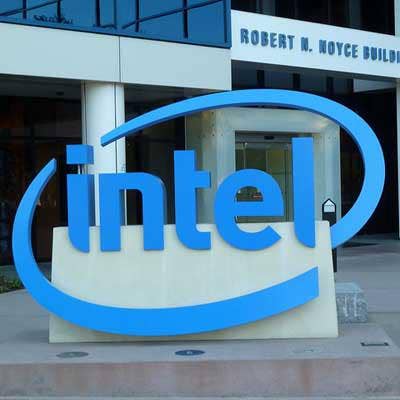Intel Regains On PCs, Loses In Servers Against AMD In CPU Market Share
While AMD’s x86 market share in the PC segment grew slightly in the second quarter from the previous three months, Intel’s share of 82.7 percent was 6.4 points higher than it was a year ago, largely thanks to ‘significant growth in entry-level mobile CPUs that are primarily used in Chromebooks, according to Mercury Research.

Intel regained a few points of CPU market share in PCs and lost a few points in servers against its smaller yet increasingly capable rival, AMD, in the second quarter.
This is according to the latest x86 CPU market share report from Mercury Research, which said last Friday that the PC segment “rebounded off the decade lows set the prior quarter,” while the server segment is “probably near or at its bottom” after declining for multiple quarters.
[Related: Apple: Mac’s Transition From Intel Has Lured Influx Of New Customers]
“While on-year growth rates for the market remained deeply negative due to lower demand and remnants of inventory still impacting second-quarter shipments, the overall CPU market grew in the second quarter, with desktop and mobile client CPUs up more than 20 percent on quarter,” wrote Dean McCarron, principal analyst at Mercury, in an email to CRN.
The more than 20 percent sequential growth in the client CPU segment is atypical for the second quarter, “when the average in a normal market is for nearly flat on-quarter results,” he added.
McCarron noted that the most recent market share movements are largely reflective of Intel and AMD “differing in the depth and timing of their inventory corrections” since both companies have seen lower sales recently due to the channel trying to sell existing chips in their warehouses.
As a result, the most recent CPU share movements are not representative of how many chips partners are selling in systems to end customers, he added, saying that he expects share movements to reflect end-user sales closer to the end of the year.
Intel Regains CPU Share In PCs
While AMD’s x86 market share in the PC segment grew slightly in the second quarter from the previous three months, Intel’s share of 82.7 percent was 6.4 points higher than it was a year ago.
McCarron credited Intel’s year-on-year share gain with “significant growth in entry-level mobile CPUs” that are primarily used in Chromebooks, including the recently rebranded “Intel Processor” chips that were previously known as Celeron and Pentium.
The mobile CPU growth is a sign that “after a year-long lull, Chromebook demand for CPUs—both x86 and Arm—has increased dramatically in the past two quarters,” he said.
Mercury estimated that share for Arm CPUs in the PC segment, when combining all x86 and Arm shipments, declined to 12.5 percent in the second quarter from 15.4 percent in the first quarter, in part thanks to contracting revenues for Apple’s Mac computers that run on the Arm-based M-series chips.
This resulted in both Intel and AMD growing PC segment share against Arm sequentially, according to McCarron. He added that Intel CPU shipments for Chromebooks grew “far faster” than Arm CPUs.
AMD Makes Big Gain In Servers
While AMD’s share in the PC segment was smaller than it was a year ago, the company experienced the opposite in the server segment, with x86 CPU share growing 4.6 points year-on-year to 18.6 percent against Intel.
AMD reached this point by growing its server CPU share by a little more than half a point in the second quarter from the previous three months, according to Mercury.
However, McCarron noted that “both Intel and AMD saw increases in their higher-end data center-oriented processors” in the second quarter. He said the reason Intel lost share in the quarter was due to lower shipments for single-socket Xeon processors as well as CPUs tuned for networking and storage workloads that are sold out of the company’s Network and Edge Group.
Despite the large year-on-year share gain in servers, AMD’s overall x86 CPU share was dragged down by a decline in semi-custom chip shipments for game consoles in addition to its client CPU lull.
Partner Sees CPU Uptick For Chromebooks
The leader of a Beaverton, Ore.-based ChromeOS device vendor said he’s seeing the uptick in demand for Chromebooks that’s reflected in the latest CPU market trends from Mercury.
Erik Stromquist, CEO of CTL, said the increased demand for Chromebooks is the result of schools and other educational institutions seeking to replace old devices they bought during the early part of the COVID-19 pandemic to ensure every student had a laptop.
“There were massive spikes in 2020 and 2021, in particular for education devices as a lot of schools were forced to go to one-to-one [student-to-device ratios] and take home devices. Now those are coming up three years old, and we’re in the replacement cycle,” he said. “We’re going to see pretty large replacement cycles because of the heavy consumption in 2021.”
While CTL primarily uses Intel CPUs for its ChromeOS devices, the company has started to use Arm-based CPUs from Taiwanese chip designer MediaTek in the past few years.
“I think they’re a strong contender, a good second choice to Intel these days, even over AMD in my opinion,” Stromquist said.